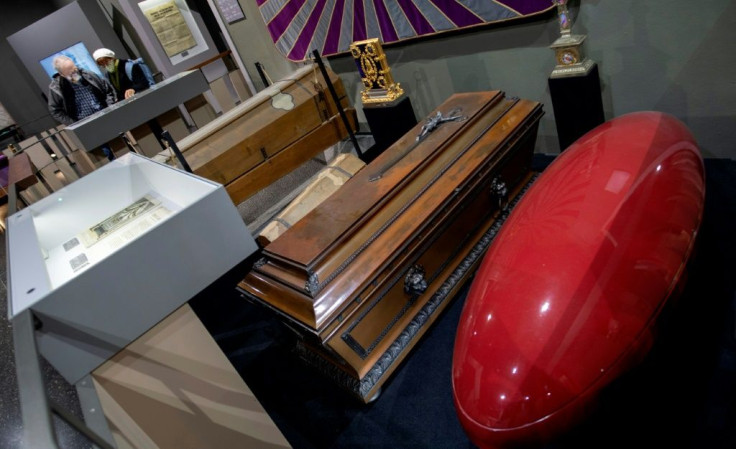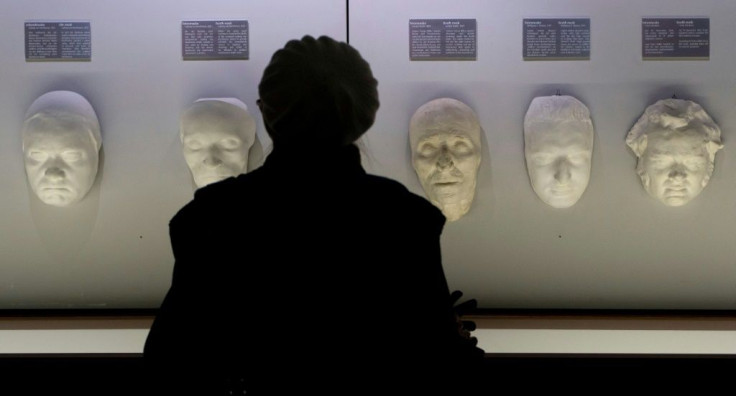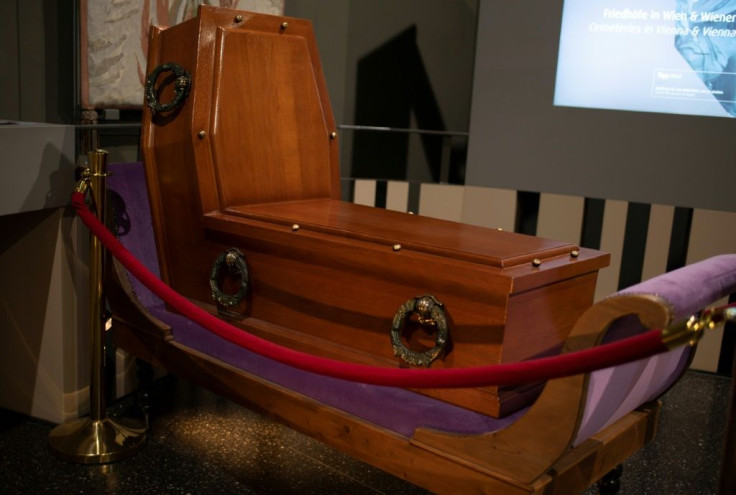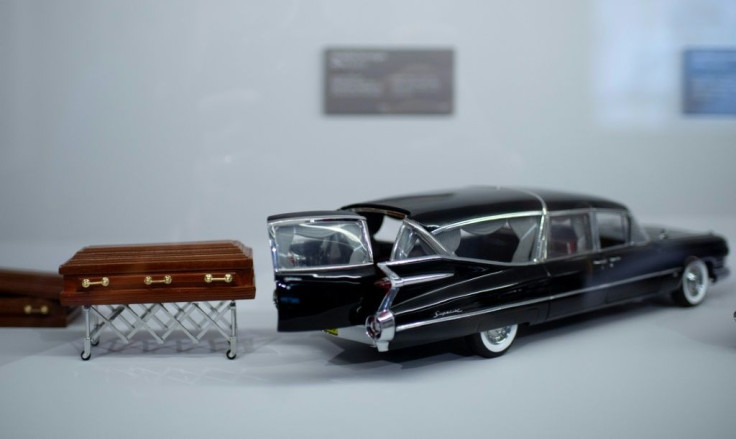With Morbid Humour, Viennese Look Death In The Eye
Even in midst of a deadly pandemic, the Viennese seek to look death straight in the eye -- an attitude on display at a morbidly humourous museum devoted to death and burial.
Right below the funeral parlour of the Austrian capital's famous Central Cemetery, burial shrouds and coffins have been on display since 1967, making the Vienna Funeral Museum the first museum to trace how we mourn the dead.
It is perhaps fitting, given the local expression: "Death must be a Viennese".

"A lot of people are probably afraid of death, but it's inevitable -- along with taxes! -- so it's a good idea to show that things haven't changed that much," says visitor Jack Curtin, a Vienna resident of American origin in his 70s.
After a day spent touring the graves of the great and the good, he has taken in the museum collection together with a friend, pronouncing it "excellent".
In normal times tourists from as far afield as Japan and Canada would come to marvel at the re-usable coffins -- introduced in the 18th century by Austrian Emperor Joseph II -- as well as the futuristic-looking "cocoon" coffin.

But thanks to the blow dealt to travel by the pandemic, the Viennese will largely have the site to themselves on Halloween and All Saints Day.

Despite the pandemic, however, the museum's new temporary exhibit commemorating the 250th anniversary of the birth of Ludwig van Beethoven is drawing visitors.
Alongside insights into the life of the German composer, who was laid to rest in the Central Cemetery, the exhibition also naturally includes his death mask and objects relating to his funeral.
Fellow composer Joseph Haydn was also buried here -- although his skull, stolen by medical students in 1809, was only recovered nearly 150 years later.
"Vienna is well known for its morbid side," says visitor Julia Wuerzl, who has come for a stroll through the leaf-strewn grounds that serve as a last resting place for three million people, outnumbering the city's living residents by more than one million.

As the coronavirus pandemic has taken hold, the museum says that it felt encouraged rather than dissuaded to keep its doors open, hoping to help locals consider death as a part of life.
"I believe that because of coronavirus, people spend more time contemplating what kind of significance death could have for their life," as well as how they would like to be buried, says museum spokeswoman Sarah Hierhacker.
Recent trends include the use of compostable urns as well as of a new area dedicated to joint burials of people and their pets that allows for "strong bonds to be safeguarded beyond death," according to a brochure.
The one thing that's frowned upon, however, is dodging the subject, even when it comes to children: The museum's gift shop offers Lego sets of crematoriums, hearses, and skeletons.
"While it is certainly necessary to choose words that are suitable for them, it's still crucial to be clear and transparent with children of all ages, because taboos create fear and a sense of being abandoned", says psychotherapist Michaela Tomek, who specialises in treating children who have experienced trauma, such as the death of a parent.
The Gothic Lego figurines, some of which are reminiscent of the Addams Family characters, have long been among the gift shop's best selling items, but the latest hit has been funeral service-branded face masks.
"Denying the coronavirus secures our jobs," reads a typical piece of black humour printed on one of the masks.
"We produced 3,000, but we've had 7,000 orders," says Hierhacker, looking on as a disappointed visitor leaves empty-handed.
As elsewhere, the pandemic is on everyone's mind, leading a visitor to indulge in some gallows humour and ask if Vienna will put its once infamous "hearse tram" back into service.
At the height of the 1918-1920 Spanish flu, the tram transported thousands of bodies straight to the central cemetery.
A century later, the public transport line 71 still follows the same route, giving rise to the Viennese euphemism for death: "to take the 71".
© Copyright AFP 2024. All rights reserved.





















